
This site celebrates the life and work of sculptor John
Cassidy (1860 - 1939).
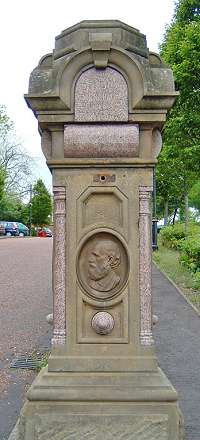
In 1867 he married Katherine Lucas, a niece of Rochdale-born reformer John Bright. They had three children, Lucas (born 1868), Beatrice (1870) and Franklin Thomasson (1873) (See 'John's Children' below.) In 1871 they were living at 'Moorfield' in Tonge, near Bolton, but when Franklin was born in 1873 they were breathing in the fresh air of Alderley Edge, Cheshire.
By the time of the 1881 census, which took place during his term as was Liberal MP for Bolton from 1880 to 1885, John and his wife are recorded as residing with their five servants at a very fashionable address: 11 Great Stanhope Street, Mayfair, London. This street was built around 1750 for the celebrated Lord Chesterfield, and named from his family name, Stanhope. (Lord Palmerston lived at No. 9, 1814-43; Sir Robert Peel at No. 12, 1820-5; Lord Brougham in 1834; Lord Raglan at No. 5, in 1853.)
The 1891 census has them at 'Woodside' in Heaton, near Bolton, where John died in 1904.
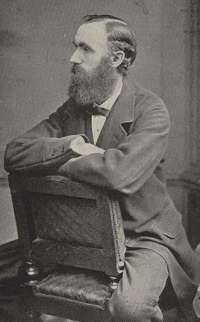
This photograph of John Thomasson appeared with the 1897 issue of Whewell's Annual Directory and Scribbling Diary, published by Whewell's of Bolton. The 'chair misuse' is common in such portraits of the period; it appears to have been a way to keep the subject still during the relatively long photographic exposures of the day.
Mere Hall
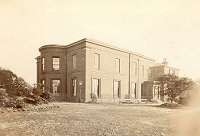
From an old photograph.
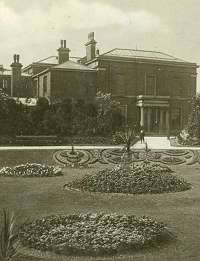
The hall and gardens, early 20th century.
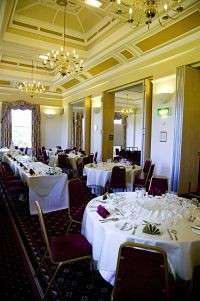
21st century: the Thomasson Suite as restored, set out for a wedding reception
Links and References
Bolton, a tale of Two Statues
(also on our site)
Famous Boltonians, by Brian Mills
John Thomasson in Wikipedia
Franklin Thomasson in Wikipedia
Lucas Thomasson Obituary, Institution of Civil Engineers Proceedings, Vol.135, 1899 p. 369-370
John Thomasson and Charles Coe: Bolton Museums 'Bolton and Darwin' exhibition.
Mere Hall today: conference, meeting and wedding venue
John Pennington Thomasson - Bolton (1893)
In addition to the statues described in our Feature
on Bolton there is a a set of bronze plaques by John Cassidy on the
main entrance gateposts of the park surrounding Mere Hall in Merehall
Street in Bolton - now Bolton Register Office. We are indebted to Brian Mills for drawing our
attention to this work, and for supplying the photographs and notes for
this page.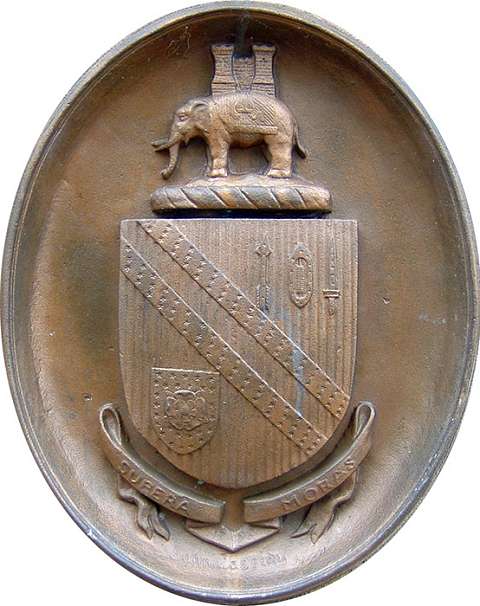
There are two plaques (thriftily duplicated), one with the old Bolton borough coat of arms (above) and one a cameo of the man who gave the estate to the town (then named Thomasson Park), local philanthropist John Pennington Thomasson. Both plaques are signed by John Cassidy.
In 1890 Thomasson bought Mere Hall, a Georgian-style mansion in the Halliwell area of Bolton, and the reins of the estate, and gave it to the town as a public park, together with £5,000 towards alterations. (See below for more about Mere Hall.)
Thomasson was a generous benefactor to Bolton and, in addition to Mere Hall, provided many other facilities, including the Thomasson Reading Room in Charles Street, which he gave to Bolton Co-operative Society, and the Thomasson Gymnasium on Folds Road. He also gave £1,000 to the borough to allow the completion of the Chadwick Museum in Queen’s Park (see our other Bolton page.)
He was made Freeman of County Borough of Bolton on 10 November 1902 and died in May 1904. He was a Unitarian, and a keen supporter of Bank Street Chapel, and his enlightened outlook is proved by the fact that he was an early supporter of the Women's suffrage movement, of which his wife Katherine was a prominent member. He was also a naturalist, who corresponded with Charles Darwin and Thomas Huxley.
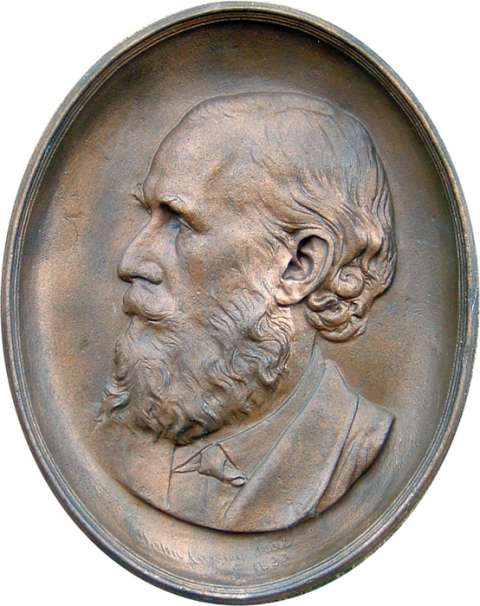
For many years the plaques were buried under dozens of layers of municipal paint (which probably protected them nicely!) but have now been restored to their previous glory. The signature 'John Cassidy fecit 1893' in Cassidy's usual style can be seen.
The Mere Hall story - by Brian Mills
Mere Hall, in Mere Hall Street, Halliwell, derives its name from Mere Hill on which it was built, the mere being a small lake or pond nearby.
In the 1830s the area was still a rural backwater, well out of Bolton itself, consisting of a house and a few cottages. The owners of the estate and occupants of the house at the time were Misses Elizabeth and Sarah Nuttall, from whom Mr Benjamin Dobson purchased the estate. He was the grandfather of Sir Benjamin Alfred Dobson, and nephew of Isaac Dobson, who founded the firm of Dobson and Barlow in 1790. Benjamin laid out the estate and built a new house in about 1837 at a cost of £20,000 which he called Mere Hall.
After Benjamin’s death in 1839 his family continued to live there, primarily his eldest son, also Benjamin. When he in turn died in 1874 the estate was sold to a local speculative builder, Mr Richard Howarth - known locally as 'Stocking Dick' because of his pastime of knitting stockings as presents for his relatives and friends - who was interested in the estate for building land. As a result, the open space around the house diminished. After his death in 1882 the house remained empty for a time but was then used by the Reverend Glenn Bott, Vicar of St Thomas’s Church, Halliwell, as a vicarage.
In 1889 the Hall and remaining estate were bought by John Pennington Thomasson, who gave them to the town, 'the house to be used as a library and museum and the land as a playground and garden, the bowling green to be maintained and kept in good order.' His gift was gratefully accepted and the Park, known at first as Thomasson Park, Mere Hall, was opened to the public on 23 October 1890.
Thomasson also gave £5000 to furnish the hall as an art gallery and this was opened on 20 December 1890, the entire building being used for this purpose. The opening of the museum and library sections took place in the following summer on 22 August 1891. The Art Gallery and Library remained open until 1938, closing only when the new Art Gallery and Central Library were opened in Le Mans Crescent in the town centre. After the Second World War the house was used as a nursery up to the early 1990s.
The house was fully restored in order to become Bolton Register Office in 1996, the magnificent building and grounds providing the perfect venue for marriage ceremonies, the first of which took place in November of that year.
The Register Books of Births, Deaths and Marriages that have taken place in the Bolton Registration District since July 1837 are also kept there, where searches may be made and copies obtained.
Footnote: John's children
A brief summary of the lives of John and Katherine Thomasson's three children, who all have interesting stories.
Lucas Thomasson studied at Owens College in Manchester, served as a premium pupil (an apprenticeship paid for by his father) at Yarrow shipbuilders in Poplar, London, before returning to Bolton work in the family firm, but suffered health problems and sadly died in 1898 aged 30..
Beatrice Thomasson married John Arthur Coe, son of Charles Clement Coe, a Bolton Unitarian Minister and naturalist friend of John Thomasson. John Coe worked as a cotton salesman, later a cotton spinner, no doubt as an employee of the Thomasson company; by 1901 he had already retired, at the age of 32, and the couple were living in Surrey. Their daughter Joyce, born in 1896, lived until June 1991.
Franklin Thomasson followed his father into Parliament, serving as Liberal MP for Leicester from 1906 to 1910. He married an American lady, Elizabeth Coffin, and the couple became active in the women's suffrage movement. Franklin became a newspaper proprietor and editor, in support of his Liberal politics: he was one of the founders of The Tribune. edited by William Hill and L.T. Hobhouse, which was published from 1906 until 1908. He was also involved with Ebenezer Howard's Garden City movement, being one of the directors of the First garden City Pioneer company, founded in 1902, which developed the first Garden City at Letchworth. During World War I he commanded the 2/5th Battalion. Loyal North Lancashire Regiment. He died in 1941.
Page created July 2009 by Charlie Hulme from text and pictures by Brian Mills.